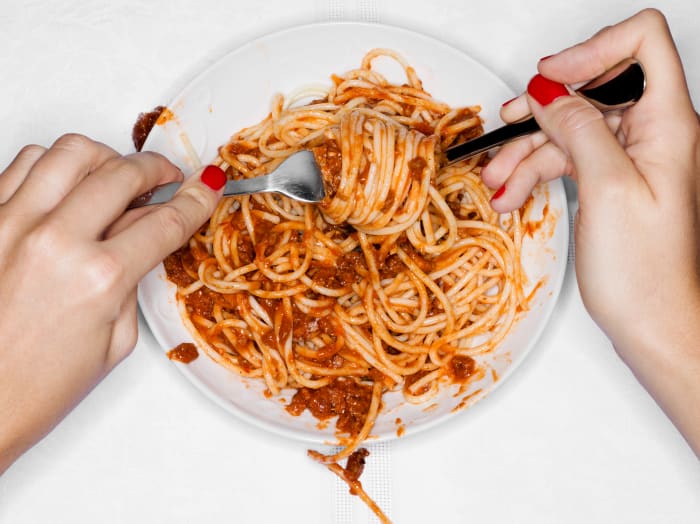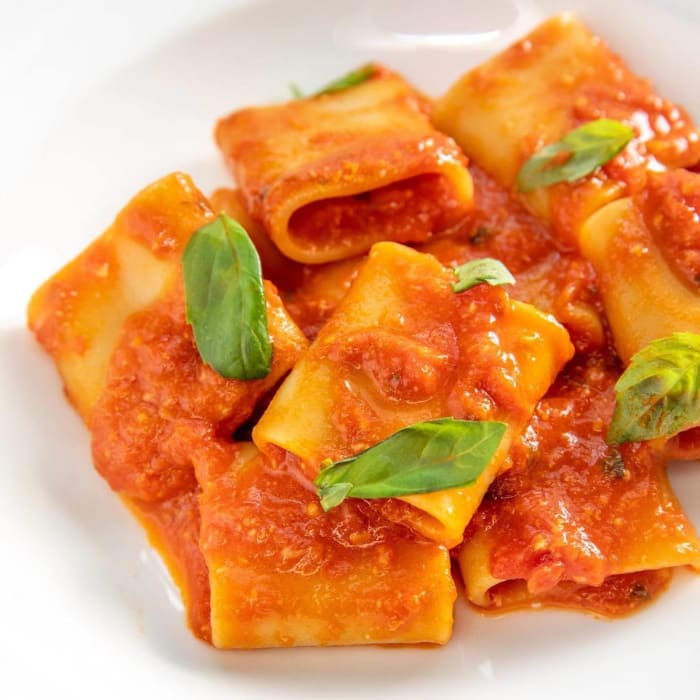Pasta Isn’t Objectively Bad For You, But Overcooking It Is
Alisandra Puliti

Jonathan Knowles/Getty Images
After my birthday and Christmas, October 17 may be the best holiday of all – National Pasta Day. With over 500 shapes and a multitude of sauces, the pastabilities are endless for lunch or dinner. Despite many being deterred from eating the carb-rich food, I’m here to tell you that macaroni shouldn’t be exiled to the Do Not Eat list… unless there is a specific medical reason. From what I’ve learned over the years, it really is all about the quality of ingredients, the elimination of preservatives and portion control, all of which play such big roles in Italian eating.
When it comes to pasta, how it is prepared can have as big an impact on our stomachs as on our taste buds. [Full disclaimer: I have been known to send back a dish or two of mushy pasta with no regrets.] “Pasta cooked al dente (Italian for to the tooth) describes the texture of cooked pasta which is tender but firm with a pleasant chew and slight bite,” says Simone Panella, executive chef and partner of celebrity-favorite restaurant Antica Pesa, in Brooklyn. “It retains much of its physical components and nutrients, is highly digestible and has a lower glycemic index.”
Panella, whose family eatery turned 100 in Rome and is celebrating its 10th anniversary in New York, explains: “Raw pasta is not easy to digest because the body’s digestive enzymes cannot adhere to it, whereas overcooked pasta tends to form a sticky dough in the digestive tract, which blocks digestion. To digest it, the pasta must fully gelatinize the starch granules which turns the noodles into an energy drainer in your body.”
Keeping the pasta boiling for too long will also cause the starch to release into the water resulting in a loss of nutrients. (Two ounces of dried white pasta has about 7 grams of protein and 2 grams of fiber along with iron and B vitamins.) “With this shorter cooking time, the starch granules are hydrated but not so much that they release into the cooking water,” he adds.
The final advantage to cooking pasta al dente is that each bite takes time to chew so the meal is not rushed. This gives the stomach a chance to detect when it is full and not overstuffed to the point where you can’t breathe. It is also a way to savor every flavor coming from one dish no matter how simple or intricate it may be.
Below Panella shares the recipe for Antica Pesa’s Paccheri al Pomodoro, which is one of his family’s staples and can also be found in their cookbook. “This dish is part of an Italian tradition in everyone's kitchen,” he notes. “The key to keeping this dish healthy is in using a high-quality pasta with a single-origin Italian grain. We suggest the brand Mancini as they source each pasta with the latitude and longitude of their specific grains.”
Buon Appetito!
PACCHERI AL POMODORO

Photo courtesy of Antica Pesa
Ingredients:
“It’s a very natural recipe which doesn’t use many measurements, but for two people it would be equal parts pasta/tomatoes (200g/.44 lbs each),” says Panella.
- Paccheri Mancini (or another high-quality dry pasta)
- fresh heirloom cherry tomatoes
- Parmigiano Reggiano (aged 36 months) to sprinkle at the end
- extra virgin olive oil
Directions:
- Cook tomatoes in a pan at low flame with a light coating of olive oil and sea salt for five minutes.
- After five minutes, keep cooking tomatoes but start to cook the Paccheri for 10 minutes or a little less than the designated time on the box in boiling salted water.
- Before draining the pasta when it’s ready, save some pasta water, which is rich in Aminos to use later.
- Transfer the cooked pasta in the tomato pan and stir.
- Add a little bit of the pasta water to coat the Paccheri and add extra olive oil.
- Turn off the flame and add the grated Parmigiano, then serve.
Important to note:
Says Panella, “You don’t need to use a high temperature. We’re Italian, we need time to put love in our food, so use a medium-low flame for the pan.”